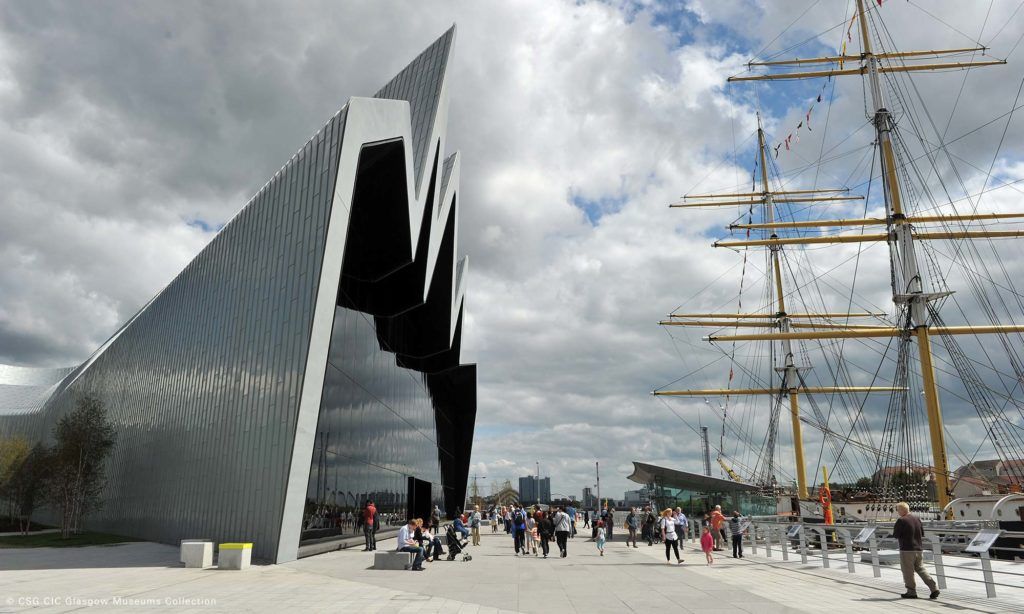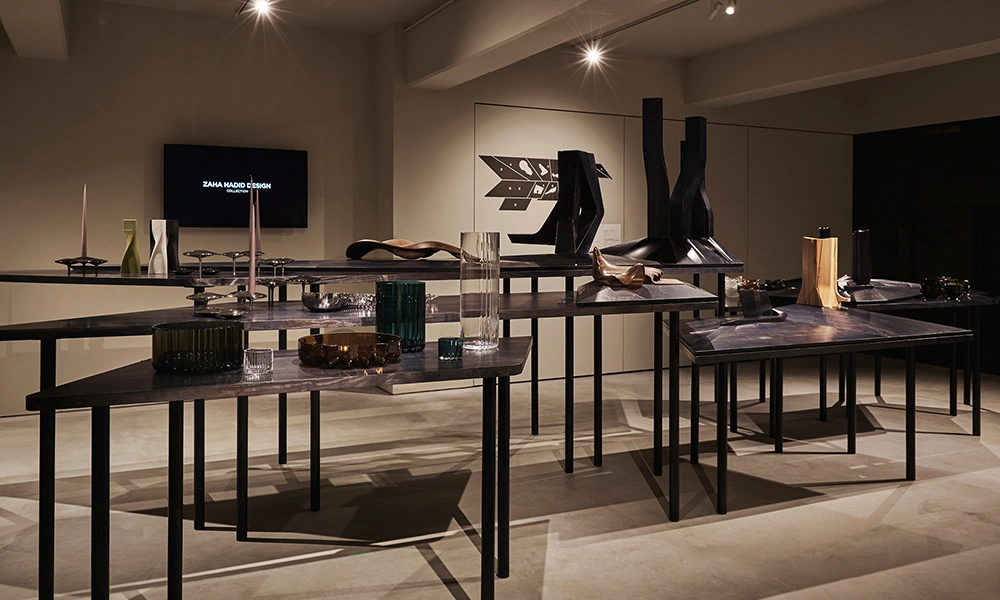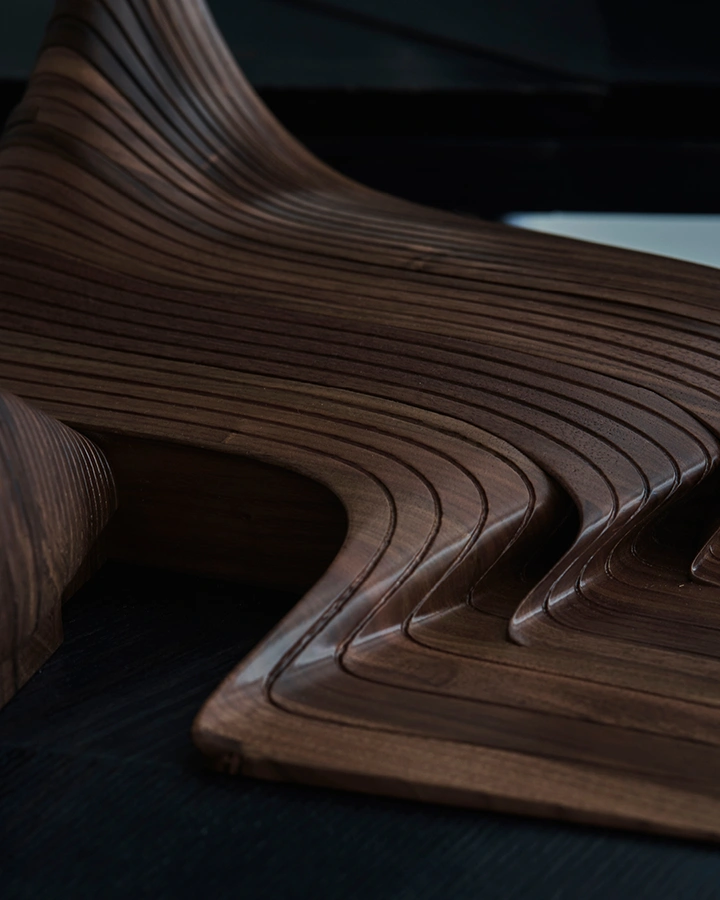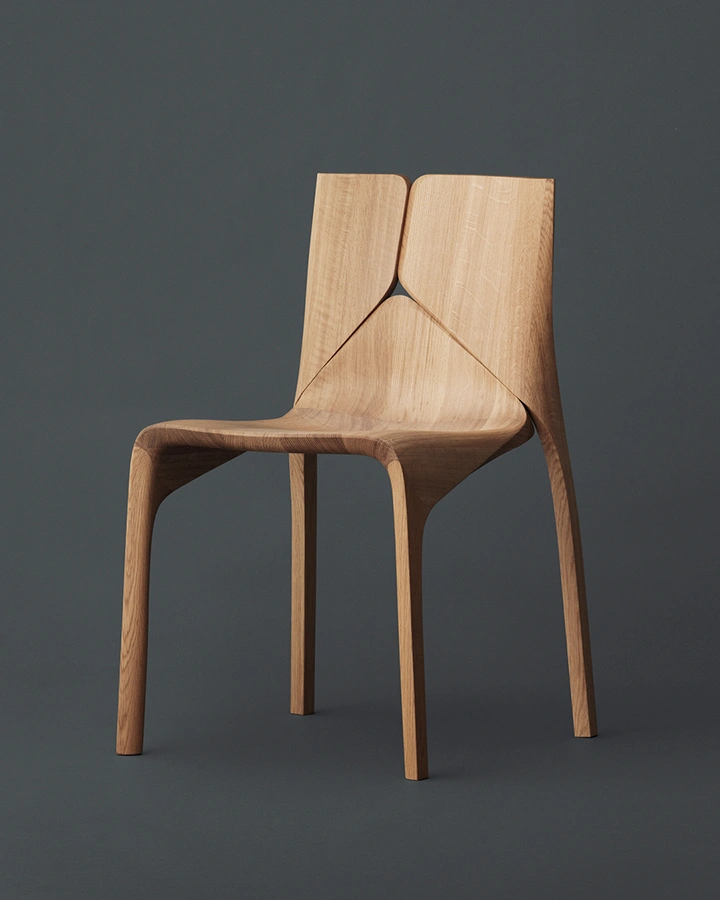
Her name has become synonymous with flowing designs and visionary ideas: the so-called ”Queen of Curves” has shaped modern-day architecture like no other. This article presents six of Zaha Hadid’s buildings that showcase how she turned public venues into works of art.
Critics considered her drafts “unrealistic“ – until her career finally took off, that is. Zaha Hadid’s work defied the rigid paradigms of mainstream architecture, putting a unique twist on urban landscapes across the globe. To honour her legacy, we revisited six of her most famous creations – from historic museums to luxury apartment complexes.
1. Zaha Hadid’s fire station: fantasy meets functionality
It all started with a project of the Suisse design company Vitra in the early 1990s: after the headquarters in Germany had been burnt down, a fire brigade was set up to prevent future accidents. This called for a new building – and Zaha Hadid was up for the challenge.
It all started with a project of the Suisse design company Vitra in the early 1990s: after the headquarters in Germany had been burnt down, a fire brigade was set up to prevent future accidents. This called for a new building – and Zaha Hadid was up for the challenge.
Her fire station stands in stark contrast to the adjacent halls, reminiscent of a sculpture cast in stone. Different levels of concrete cross each other at peculiar angles while collectively pointing towards the main entrance. The facade’s experimental qualities are complemented by a minimalist interior with straight lines and sharp edges. All in all, Zaha Hadid’s fire station visualises her early attempts to transform outside-the-box concepts into functional architecture. Today, it serves as a venue for events and exhibitions hosted by Vitra.
2. Maxxi Museum: a futuristic temple for the “Eternal City”
Towards the end of the 1990s, Hadid had already found a signature style. Her distinct curves came in first place during an international competition organised by the Italian Ministry of Culture: the goal was to build one of the world’s largest modern art museums in Rome’s Flaminio district. Having won the contest with her design, Zaha Hadid thus brought the Maxxi (short for “Museo nazionale delle arti del XXI secolo“) into being.
Towards the end of the 1990s, Hadid had already found a signature style. Her distinct curves came in first place during an international competition organised by the Italian Ministry of Culture: the goal was to build one of the world’s largest modern art museums in Rome’s Flaminio district. Having won the contest with her design, Zaha Hadid thus brought the Maxxi (short for “Museo nazionale delle arti del XXI secolo“) into being.
Contrasting the vertical structures that characterise the old district, the L-shaped complex seemingly flows around a horizontal axis. Zaha Hadid’s museum spans 27,000 square metres that are full of surprising twists and turns. In the foyer, visitors can walk on free-floating bridges and explore the space at various heights and angles.
It took a full decade to complete the new museum, which opened its doors in 2010 with five exhibitions.
3. Riverside Museum: a fusion of the elements
In Glasglow, Scotland, the Riverside Museum of Transport blends in seamlessly with its surroundings. A typical example of Zaha Hadid’s building style, it forms an elegant connection between the rivers Clyde and Kelvin and the mainland. The huge glass front is framed by a jagged metal roof that defies geometrical order. Depending on your angle of vision, the structure’s appearance alternates between fluent waves and sharp edges. The Riverside Museum was finished in 2011, marking Hadid’s first major project on British soil.

4. Zaha Hadid‘s Heydar Aliyev Centre: culture-infused architecture
In 2007, it was once again a contest that brought Zaha Hadid to new heights. Her design for the Heydar Aliyev Centre in Baku, Azerbaijan, came out as the winner – another milestone in her career. The sculptural complex (which includes a national museum, library, as well as several concert and conference halls) clearly stands out from the surrounding architecture. To realise the challenging construction, the main body was combined with a special grid frame system. The light-reflecting shell can look strikingly different, depending on your vantage point or the time of day. At night, the transparent facade allows for spectacular view inside the centre.
5. One Thousand Museum: a luxury high-rise in Miami
Even after her sudden passing in 2016, Zaha Hadid continued to redefine our understanding of architecture as we know it. One of her last projects (and her first high-rise construction) in the western hemisphere is the One Thousand Museum in Miami, Florida. Don’t be fooled by its name: rather than a cultural building, Zaha Hadid developed an exclusive residential complex this time around.
Even after her sudden passing in 2016, Zaha Hadid continued to redefine our understanding of architecture as we know it. One of her last projects (and her first high-rise construction) in the western hemisphere is the One Thousand Museum in Miami, Florida. Don’t be fooled by its name: rather than a cultural building, Zaha Hadid developed an exclusive residential complex this time around. Located on Biscayne Boulevard, it measures more than 200 metres in height. The outer structure consists of a ribbed body with interwoven lines reminiscent of a scorpion – hence the nickname “Scorpio Tower”. In total, there are 83 units spread across 62 floors. Residents get to enjoy the full scope of supreme living comfort: the luxurious amenities even include a pool landscape and a helicopter landing pad. Based on the sketches of Zaha Hadid, the building process began in 2012 and was finalised in 2020, four years after her death.
6. Infinitus Plaza: a symbol of continuous creation
In November of 2021, the youngest example of Hadid’s legacy opened its doors in the Chinese province of Guangdong. The so-called Infinitus Plaza serves as the new headquarters of Infinitus China, a health and wellness brand. Across 185,643 square metres, the complex offers enough room for workspaces, research institutes, and an educational centre for conferences and exhibitions.
In November of 2021, the youngest example of Hadid’s legacy opened its doors in the Chinese province of Guangdong. The so-called Infinitus Plaza serves as the new headquarters of Infinitus China, a health and wellness brand. Across 185,643 square metres, the complex offers enough room for workspaces, research institutes, and an educational centre for conferences and exhibitions. An underground subway tunnel splits the Infinitus Plaza into two eight-storey buildings with Zaha Hadid’s trademark feature: dynamic curves that seem to flow just as organically as a body of water. The whole construction is marked by circular movements, symbolising the never-ending cycle of creation. Inside, you’ll find plenty of communal spaces, gyms, recreational areas, as well as a restaurant and café.
Following the guidelines of the GBCI (short for Green Business Certification Inc.), efficiency and sustainability remained a top priority throughout the entire building process. All in all, more than 25,000 tons of recycled material found their way into the Plaza: steel, copper, glass, aluminium alloys, plaster products, and wood, among others. Around half of the rooftop is covered by a layer of real grass. In addition, the upper floors are complemented by garden patches to grow native herbs and plants.
A smart system – powered by a photovoltaic installation – ensures that the energy consumption is kept at a minimum. Apart from regulating room temperatures, it also monitors the indoor air quality. Strategically placed windows and glass fronts, along with a translucent membrane roof, furthermore help to make the most of natural sunlight and warmth.
7. Zaha Hadid Design: a new furniture collection
All around the globe, Zaha Hadid’s buildings have set new standards for contemporary architecture. But she didn’t stop there: the Queen of Curves even translated her signature style into interior design pieces. Recently, Japanese manufacturer Karimoku Furniture started working on a new collection in collaboration with Zaha Hadid Design. The first prototype of the “Seyun” series, a wooden chair, was presented at Karimoku’s showroom in Tokyo in December 2021. The final collection will also include tables and armchairs – all inspired by the flowing shapes that made Zaha Hadid one of the most influential women architects to date.



Flowing lines and dynamic shapes: the architectural signature of Zaha Hadid translated into wooden interior pieces. Masaaki Inoue